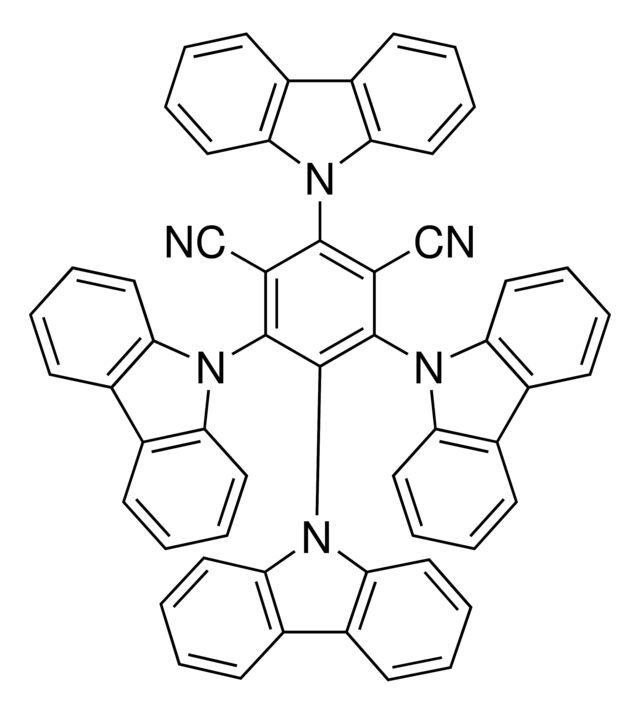4CzIPN
Safety Information
Hazard Statements
Precautionary Statements
Pictograms
Properties
| Signal Word | Warning |
Product Description
4CzIPN, or 2,4,5,6-tetra(9H-carbazol-9-yl)isophthalonitrile, is a meticulously designed organic compound celebrated for its exceptional thermal stability and compatibility with a wide range of organic solvents. This compound is essential in the manufacturing of materials for optoelectronic devices, particularly those requiring efficient electron and hole transport mechanisms, such as OLEDs (Organic Light Emitting Diodes). Its molecular architecture enables broad spectral absorption, making it ideal for applications where precise color rendition and high luminance are paramount. Additionally, its resistance to chemicals and high oxidative stability make it an enduring choice for use in demanding environmental conditions.
Application
The significance of 4CzIPN lies in its contribution to advancing the capabilities of OLED displays through optimized charge transport and lower operating voltages. Its application extends beyond display technology to enhance the performance of OPV (Organic Photovoltaic) systems by facilitating better charge collection and thus improving the overall efficiency of solar cells. The compound's versatility in material science also hints at potential applications in sensor technologies and photodetection, leveraging its optical and electrical properties to innovate within these fields.
Articles:
- Local-Excitation versus Charge-Transfer Characters in the Triplet State: Theoretical Insight into the Singlet–Triplet Energy Differences of Carbazolyl-Phthalonitrile-Based Thermally Activated Delayed Fluorescence Materials
Publication Date: November 21, 2016
Kyungeon Lee, Dongwook Kim
https://doi.org/10.1021/acs.jpcc.6b10161
- High Performance p- and n-Type Light-Emitting Field-Effect Transistors Employing Thermally Activated Delayed Fluorescence
Publication Date: 21 May 2018
Jan Sobus, Fatima Bencheikh, Masashi Mamada, Robert Wawrzinek, Jean-Charles Ribierre, Chihaya Adachi, Shih-Chun Lo, Ebinazar B. Namdas
https://doi.org/10.1002/adfm.201800340
- A New BODIPY Material for Pure Color and Long Lifetime Red Hyperfluorescence Organic Light-Emitting Diode
Publication Date: April 7, 2021
Young Hun JungDurai KarthikHyuna LeeJee Hyun MaengKi Joon YangSoonjae HwangJang Hyuk Kwon
